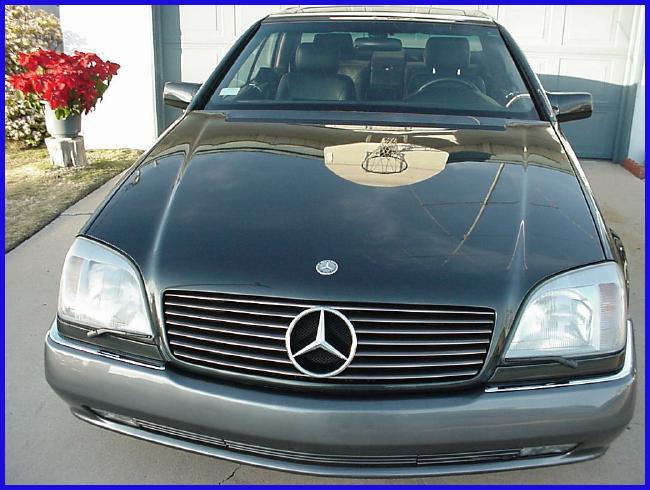|
Reconditioning/Equalizing your Mercedes Battery

Reconditioning Your Battery
The process has two main names; "reconditioning" or "equalization". Both terms are used to describe the process but I like reconditioning
better since it more describes the process. However, either can be used.
My battery was replaced about 1-1/2 yrs ago and I've not checked it until the other day. As an excuse, it's in the trunk buried under
the carpet and in a plastic 'box'. Not necessarily a good excuse but it's true since I hardly ever think about it. When I checked
it, the plates on all cells were uncovered by about 50%. So I added distilled water, and the hydrometer showed that the electrolyte was
that of "water". The charge was almost non-existant as you would think. So here's how it was brought back by reconditioning.
Reconditioning batteries refers to a method of charging deep cycle wet-cell batteries and is intended to restore battery capacity, revive
battery efficiency, and extend battery life. The process involves periodic application of a controlled overcharge cycle to batteries.
This type of charge cycle requires that certain procedures and precautions be followed.
Why is this needed?
While a battery is being discharged, sulfuric acid in the electrolyte reacts with the lead plates in a chemical reaction that produces
electricity and lead sulfate. When the battery is recharged, electricity flows back into the battery and causes a reverse chemical
reaction that turns the lead sulfate back into lead and sulfuric acid. However, with each discharge and recharge cycle, a small amount
of lead sulfate will remain on the plates. Using a three-stage charger, the amount of residual sulfate left on the plates will be less
but some will still accumulate with each discharge and recharge cycle.
If this sulfate is left in place for very long, it will harden or crystallize and eventually reduce the battery’s capacity, increase its
internal resistance and destroy the battery’s ability to produce an adequate amount of power. When this occurs, even an equalize charge
can not remove the sulfate and the battery becomes useless except as a recyclable item. (Recycling batteries is recommended to reclaim
the lead and prevent contamination of the environment.) Over time, the electrolyte tends to stratify into layers of acid and water with
higher concentrations of acid near the bottom of each cell and more diluted electrolyte near the top. This causes uneven specific gravity
within a cell and further reduces its capacity and efficiency.
The Equalizing Process
An equalizing charge is a controlled overcharge cycle that performs several actions within the battery and provides certain benefits. During
equalization, the voltage is raised to approximately about 16.5 volts for a 12-volt battery. The current output of the charger should be
limited to about 5% of the battery's capacity. For example, a 200amp hour battery should be allowed to accept no more than about
10 amps of current. However, a large car battery of 850amps (a typical Mercedes battery), requires at least 10 to 20 amps. This is
problematic with some chargers since this level exceeds the available current from the charger. So smaller currents MUST be employed.
The good news is that this will help prevent overheating but will take considerably longer to complete the process. My charger (Xantrex 40A)
has a "recondition" mode where it will produce a constant 15amps while in this mode.
The equalize cycle is timed to be between 4 and 8 hours depending on the features of the charging source, but the cycle can always be
terminated early if necessary. This elevated voltage results in a vigorous charging action to take place within each cell that has several
effects on the battery. First, much of the residual sulfate is forced to recombine with the electrolyte in the form of sulfuric acid.
Crystallized sulfate that will not recombine is broken loose from the plates and falls harmlessly to the bottom of the battery. Deep cycle
batteries have additional space beneath the plates intended to collect this material. This action cleans the plates exposing fresh lead to
the electrolyte and restores battery capacity. The vigorous bubbling action that occurs during equalization stirs up the electrolyte and
restores it to a consistent mixture of acid and water. The equalizing process also causes all cells in a battery to reach their maximum
idle potential of 2.1 volts.
Specific Gravity Levels vs Battery Charge States
| Charged State |
Specific Gravity |
Voltage
@ 80F * |
Remarks |
| 100% |
1.265 - 1.275 |
12.65 |
Ideal but hard to attain due to lead sulfate buildup |
| 75% |
1.225 - 1.235 |
12.42 |
Most batteries can attain this |
| 50% |
1.190 - 1.200 |
12.21 |
Condition of most batteries |
| 25% |
1.155 - 1.165 |
12.00 |
Condition of my battery! |
| 0% |
1.120 - 1.130 |
below 11.9 |
After adding distilled water to cover plates |
* The measured voltage is "open-circuit" w/ no battery loads
How to do a Battery Reconditioning
The info here shows how to go about doing this and is very general. As was noted, the process depends greatly on your battery charger's
capability. It should be able to produce at least 10amps, preferably 20amps. Based on this the following procedure shows the major
steps necessary to complete the process.
WARNING: Explosion hazard; Battery reconditioning feature works only on flooded lead-acid batteries.
Do not attempt to recondition sealed lead-acid batteries. During the battery reconditioning process, the battery generates potentially
flammable gases. Follow all the battery safety precautions listed here. Ventilate the area around the battery thoroughly and ensure that
there are no sources of flame or sparks in the vicinity.

1) Disconnect all loads from the battery by removing battery cables or by opening a disconnect switch.
2) Connect the red positive (+) clip of the cables to the positive (+) terminal of the engine battery.
3) Connect the black negative (–) clip of the cables to the negative (–) battery terminal.
4) Apply AC power to the charger, and turn the AC power ON/OFF switch to ON (if it has one).
5) Force the charger into the Equalize or Recondition Mode. If it's a manual charger, set it for 10amps.
6) Monitor the specific gravity of each cell of the battery during reconditioning with a battery hydrometer as shown in the
picture. Reconditioning is complete when the specific gravity of each cell of the battery remains constant or attains at
least 75% or better. The table above shows specific gravity vs percentage of battery charge as well as the typical voltage
that you can measure. When the battery reaches the target specific gravity, you can terminate the process.
7) Turn the AC power ON/OFF switch to OFF.
8) Remove the black negative (–) clip and the red positive (+) clip from the vehicle’s battery terminals.
You should now have a recondtioned battery ready for the task of providing power to your Mercedes.
Send me  with your comments
with your comments
|
|



